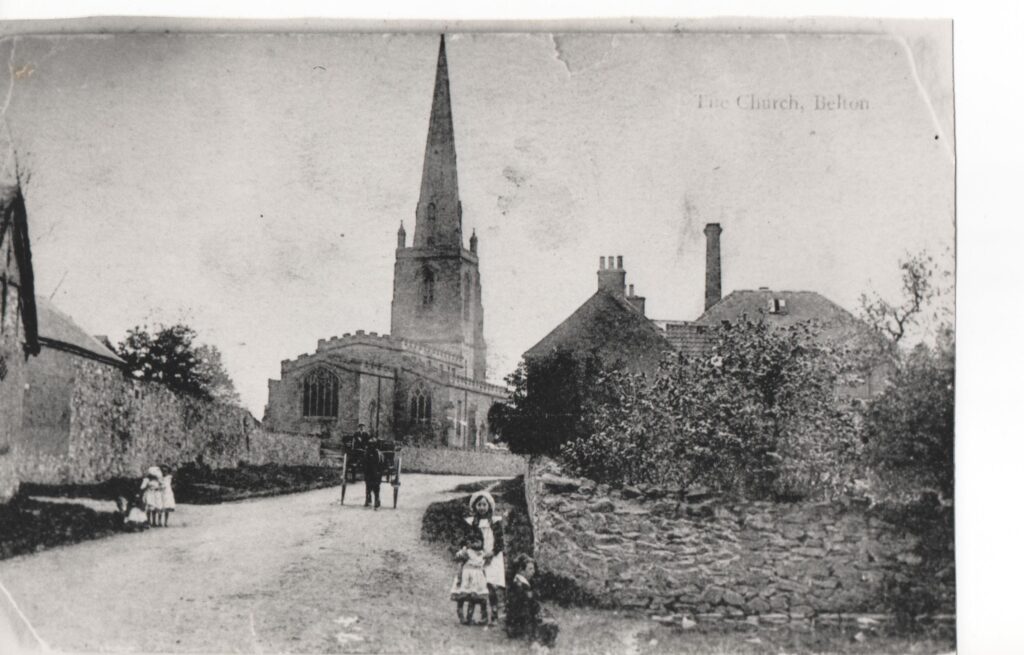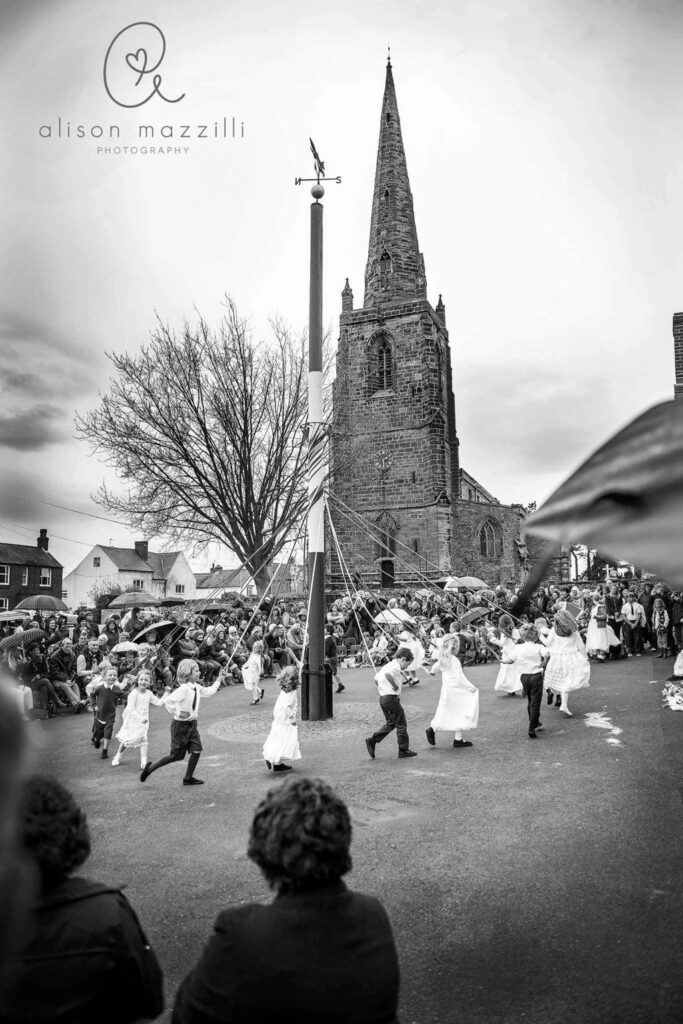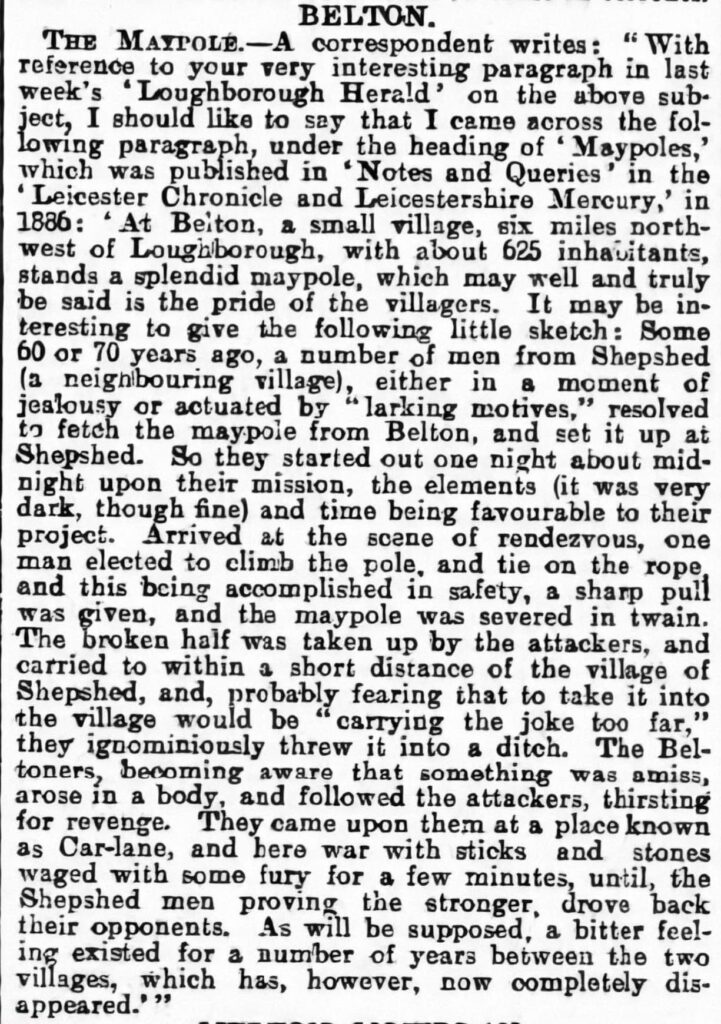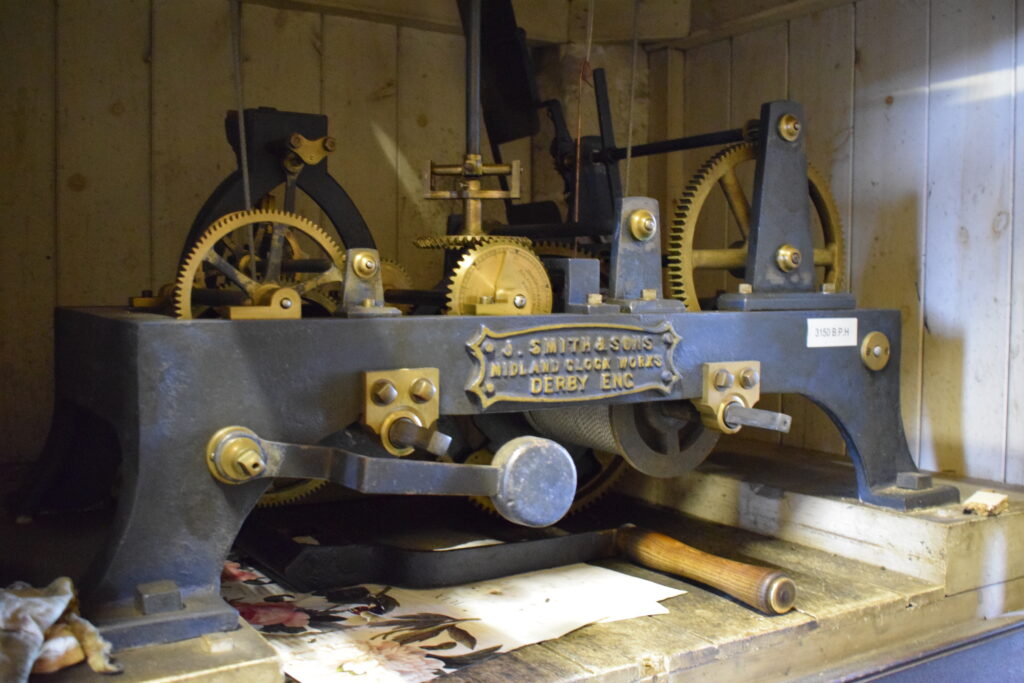
As we stand in Belton market place, we are standing in a medieval marketplace with the 13th century church of St John the Baptist built on the highest point in the village. Opposite is the Manor house which was granted to the wealthy de Verdun family by William the Conqueror. The original building has long since disappeared and the present Victorian building has been modernised and all the interesting features obliterated.
Adjacent to the phone box is the remains of the pinfold where stray animals were tethered and looked after until their owners reclaimed them, on the payment of a fine. There are two public houses bordering the market place The Queen’s Head dating from the 18th century and the George Inn built around 1753 as a coaching Inn with arched entrance and yard and stables behind.. It has been converted into apartments but the Queen’s Head is still open for business. No doubt there were inns there in medieval times.

The wall behind the bus shelter is part of the blacksmith’s building on the site of the Cock and Mittens public house and possibly the cottages are on the site were part of this public house. Anecdotal evidence says that there were once stocks and a whipping post in the marketplace under the old elm tree. There is still a static maypole in the centre of the market place.

The Maypole
The traditional mayday dances are still performed by the children from the local village school. Each year a may queen is crowned. The children all carry mayday sticks made from bunches of wild flowers fixed to garden canes. There is evidence that mayday celebrations have been carried out for over 250 years and no doubt many years before that. To the right, is an interesting newspaper cutting about the Belton Maypole.

Belton Village clock
The church clock was installed in 1921 and is in memory of men who died in the First World War. There is a war memorial on the church yard wall.
The Belton Horse Fair
The right to hold an annual horse fair and market was granted by charter by Henry III in 1221. The nuns of Grace Dieu were also granted the rights to hold regular markets at Belton in the 13th century. In Mill Lane there is a large slab of stone against the wall of the manor house. The Lord of the Manor stood on this stone to open the annual horse fair. Other proclamations and information were read out standing on this stone.
The Water Mill
Mentioned in the doomsday book, in 1086. The present buildings are 18th century and replaced existing buildings. It was in working order until 1939. The last miller was Gerald Chester, who died in 1956. The mill wheel was inside the mill. The mill buildings have now been replaced by stables. It is not known whether any of the mill workings and mill stones are still in existence.
Top middle and bottom Merrill Grange Farms and Belton water mill belonged to Grace Dieu Priory, during the medieval period.. The land next to the Mill with the stream running through was the site of the Belton Horse Fair.